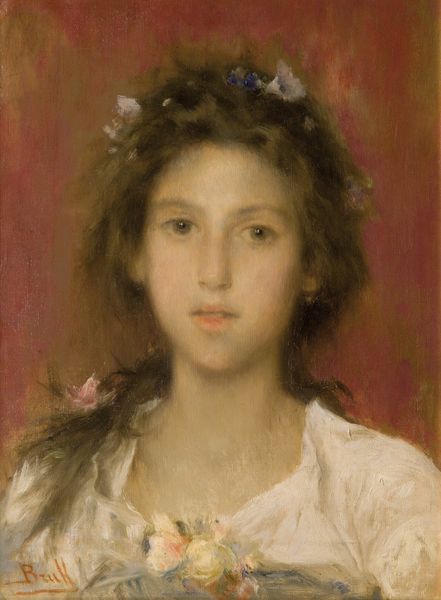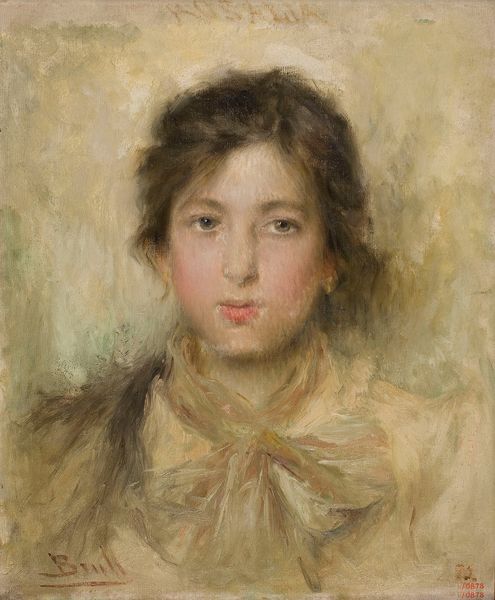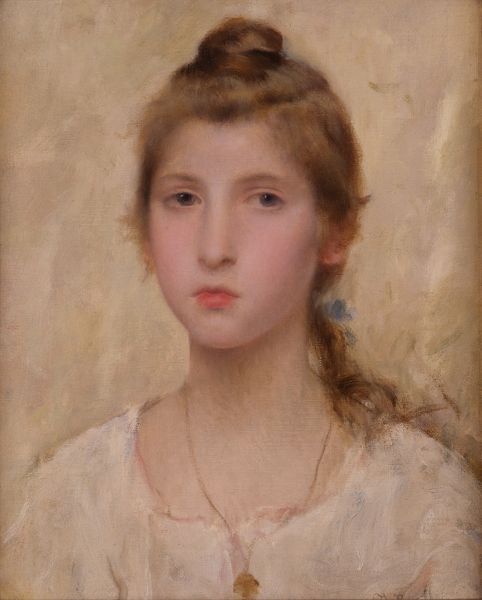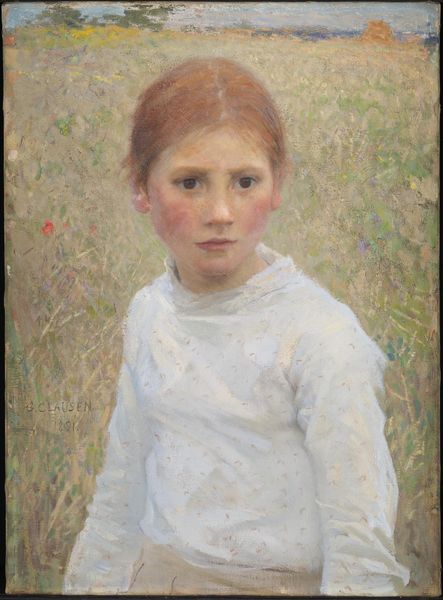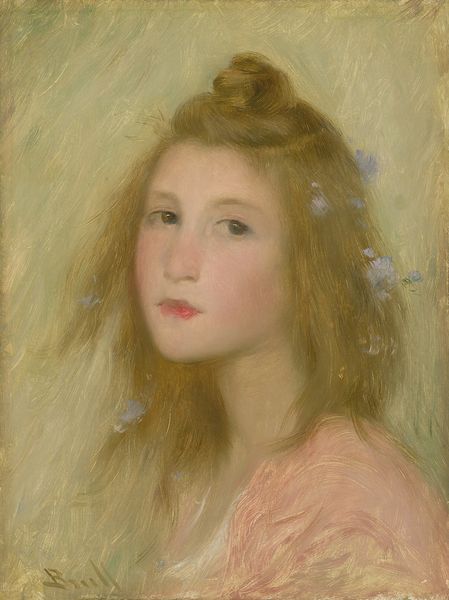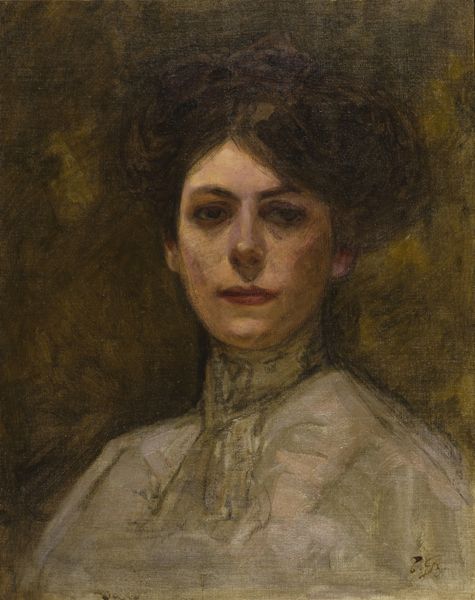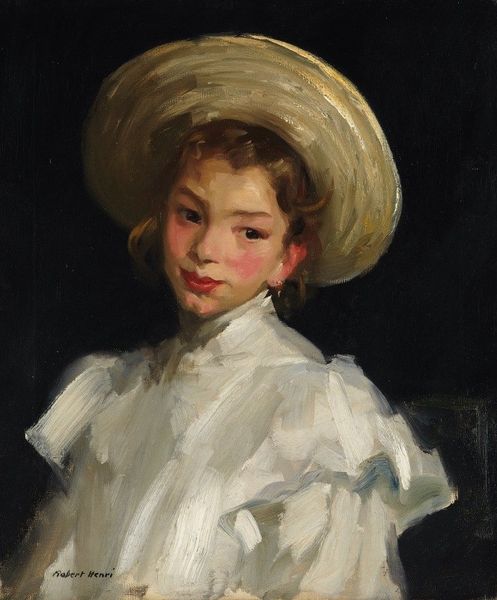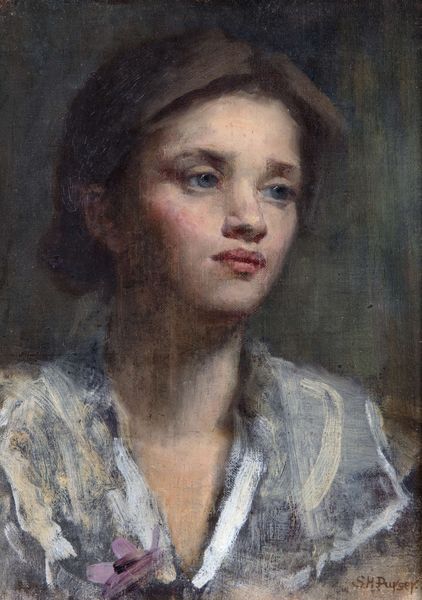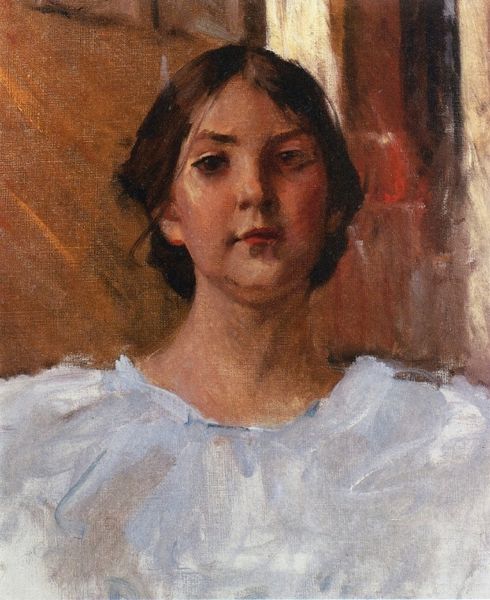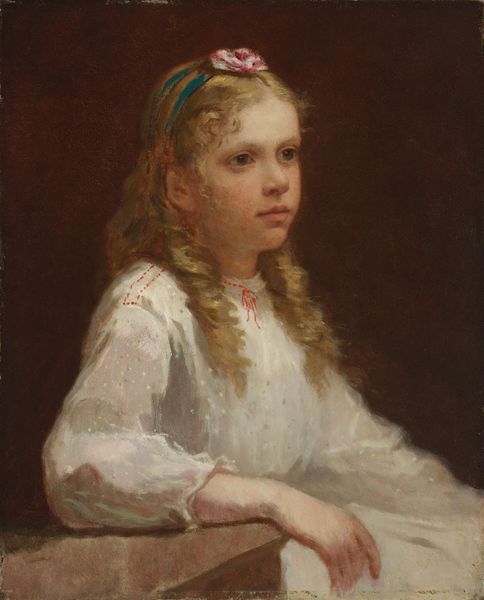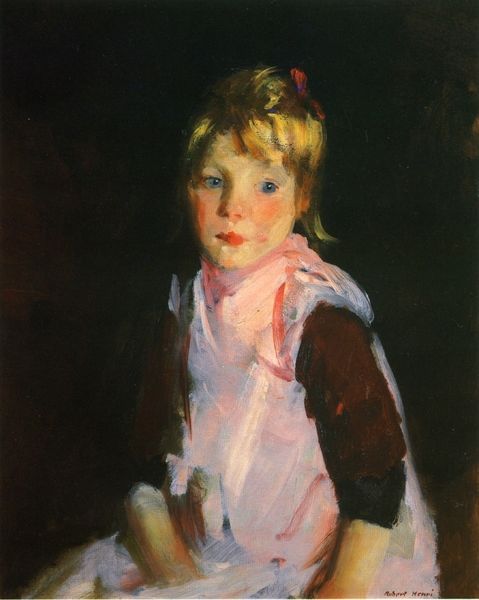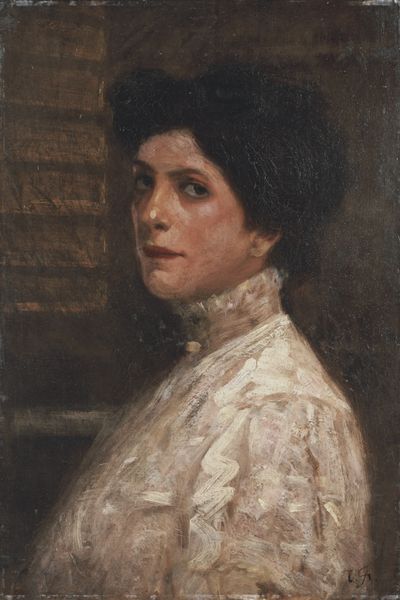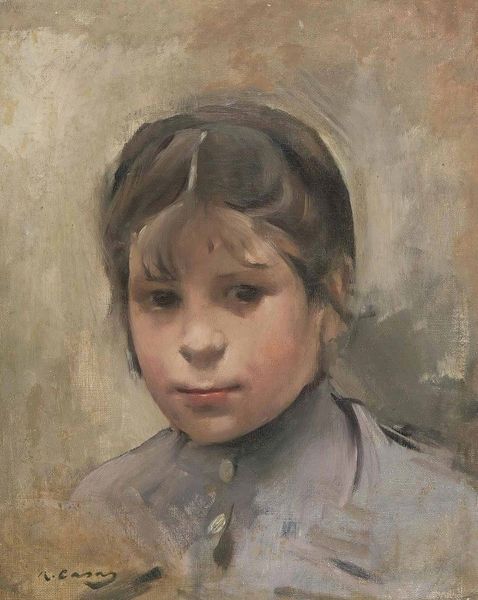
Copyright: Public domain
Editor: Here we have Joan Brull’s "Portrait of Rosó Galià as a child," from 1896, crafted with oil paint. There's a gentleness to it, especially in the soft brushstrokes depicting the girl’s face. How do you interpret this work, especially considering the context of its creation? Curator: From a materialist perspective, I see this portrait as deeply embedded in the economic and social structures of its time. Oil paint, while a traditional medium, speaks to the accessibility of artistic materials for a particular class. Who commissioned this portrait and what was their social standing? This wasn't a canvas accessible to all, but rather indicative of the privileged. Editor: That makes sense. The crisp white dress definitely speaks to that. Is the artistic style also connected? Curator: Certainly. Impressionism, with its loose brushwork, might seem purely aesthetic. However, consider the labour involved. Rapid, expressive strokes contrast sharply with the detailed realism preferred by earlier aristocratic portraiture. What does this shift signify about the changing relationships to work and leisure at the end of the 19th century? How might this portrait participate in constructing and conveying ideas about the domestic sphere and women's roles in that era? The gold earrings suggest subtle status markers, even in a child's portrait. Editor: So you're saying every element, from the paint itself to the style, speaks to the economic conditions and social status surrounding its creation? Curator: Precisely. And consider how it differs from portraits of working-class children during that time. It’s crucial to ask who has the resources to be memorialized in paint and why. It invites us to contemplate the artist’s means of production in relation to societal standards, power structures, and material conditions. Editor: This has given me a completely different perspective on portraiture. I'm no longer only looking at the aesthetic appeal, but also at its connection to broader societal issues. Curator: Indeed. By interrogating materiality, labour, and consumption, we can unveil deeper meanings embedded within seemingly simple images.
Comments
No comments
Be the first to comment and join the conversation on the ultimate creative platform.
